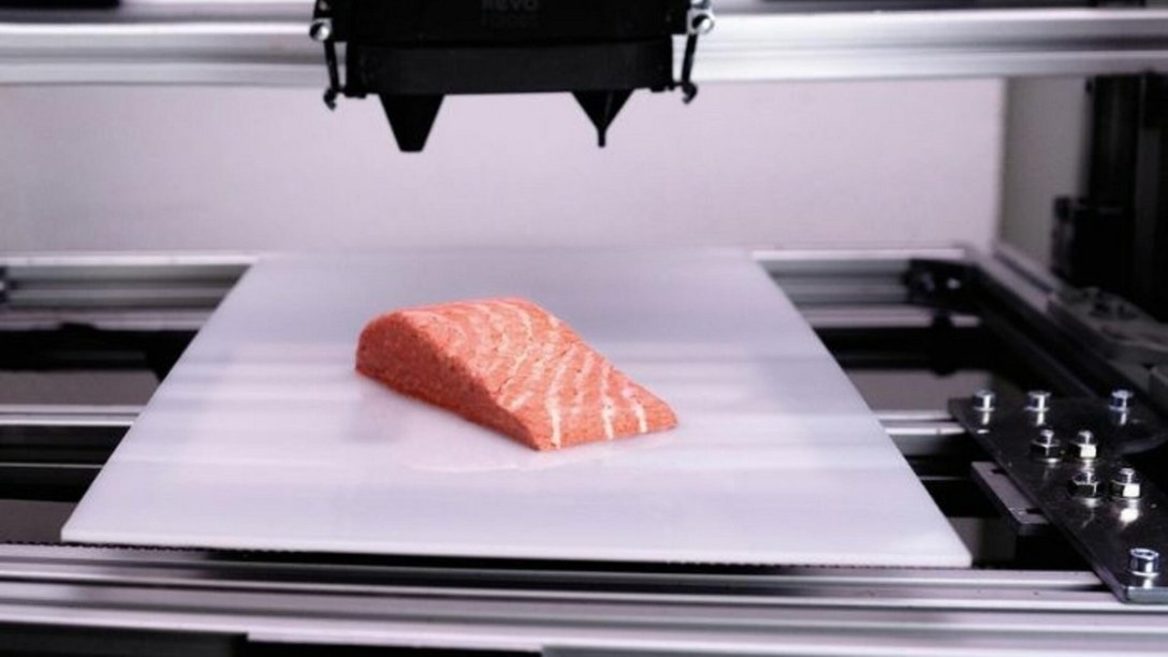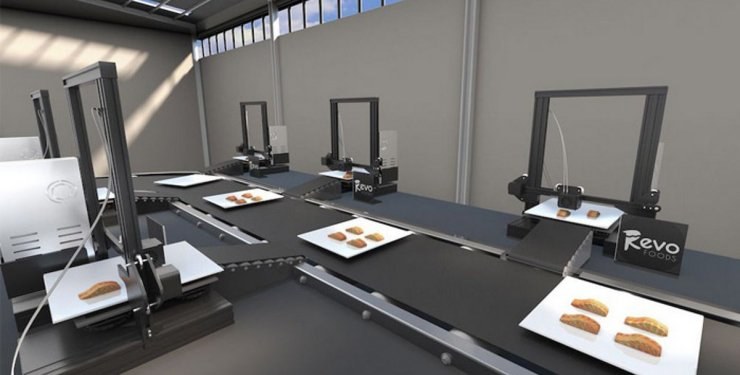
Salmon fillet made on a 3D printer appeared in Viennese supermarkets: what is it made of?
Food manufacturer Revo Foods has created an unusual vegan dish – a salmon fillet that is printed on a food 3D printer and does not contain fish. However, the technologists managed to preserve almost the entire composition of vitamins, minerals and other useful components that real salmon is famous for.
This artificial process, according to the company, makes it possible to take more care of the environment and not harm the salmon, helping to save about 80% of CO2 and 95% of fresh water. The calorie and fat content of the printed product correspond to fish fillets, and the vitamin content is similar to natural salmon fillets. However, the protein content is lower: 9.5 g instead of about 18 g per 100 g of real fillet.
The list of ingredients for 3D printed fillets includes mushroom and soy proteins, vitamins, and numerous binders and additives. The ingredients are given a realistic shape using a 3D printer. Colorants provide the appropriate color.

Revo Foods received 1.5 million euros in funding from the European Union for its development. Together with the Swedish company Myocorena, a process was developed in which fungal proteins form the basis of the fiber structure.
Robin Sims, CEO of Revo Foods, primarily wants to help develop alternatives to seafood in the near future, but believes that his technology can be applied to many other foods.
It is not yet known whether such 3D products will be able to prevail and take a significant market share, despite the high price (a 130 g fillet costs 7 euros), food experts say.

